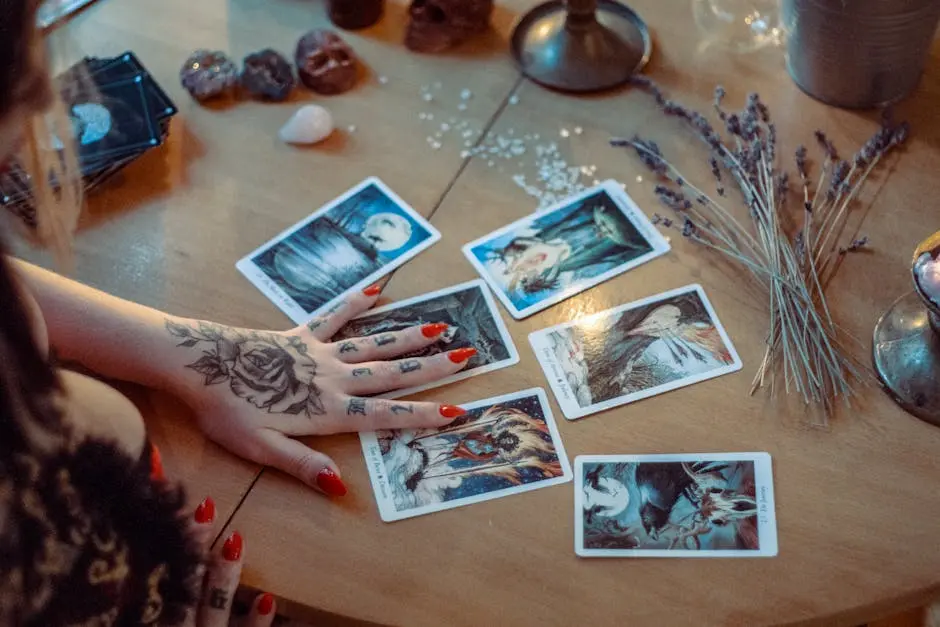Tarot cards have intrigued people for centuries, promising insights and answers to life’s big questions. But can they really predict the future? In this blog, we’ll explore the fundamentals of tarot, the interpretations of its cards, and whether they can truly offer glimpses into what’s to come.
Understanding Tarot Cards
Before exploring their predictive capabilities, it’s essential to understand what tarot cards are. Tarot is a deck of 78 cards, each with unique imagery, symbols, and interpretations that tell stories and reflect life experiences.
The cards are divided into two main sections: the Major Arcana and the Minor Arcana. The Major Arcana cards represent significant life events and spiritual lessons, while the Minor Arcana cards focus on everyday issues and challenges.
Each card contains rich symbolism and meaning, which can vary depending on the context of the reading. This layered approach allows tarot readings to resonate deeply with individuals, providing insight into their unique situations.
Ultimately, understanding tarot’s structure and symbolism is fundamental to appreciating how it works in readings and how it can potentially guide one’s choices.
How Tarot Readings Work
A tarot reading typically involves a reader shuffling the deck and laying out the cards in a specific spread. Each card’s position can offer insights into past, present, and potential future scenarios, depending on the question asked.
The act of shuffling is more than just randomization; it’s a way to connect with the energy of the querent, the person seeking guidance. This connection sets the stage for a meaningful reading.
Once the cards are laid out, the reader interprets them based on their meanings, positions in the spread, and how they relate to one another. The interpretation process can be highly intuitive, bringing forth insights that resonate on a personal level.
Like a conversation, the exchange between the reader and the querent can enrich the experience, making the reading more valuable through the sharing of thoughts and feelings.
The Role of Intuition
Intuition plays a significant role in how tarot readings are interpreted. The reader’s personal insights and the querent’s feelings can shape the reading, adding depth beyond the card meanings.
Some readers may have a strong intuitive connection to the cards, allowing them to perceive messages that go beyond standard interpretations. This unique perspective can lead to profound revelations for the querent.
Moreover, the querent’s energy can significantly influence the reading’s outcome. Being open and receptive often results in clearer insights, creating a richer, more meaningful session.
Ultimately, combining factual card meanings with intuition creates a layered reading that speaks to the heart of the matter, offering guidance that feels relevant and personal.
Can Tarot Truly Predict the Future?
While many believe in tarot’s predictive nature, it’s essential to view the readings as a guide rather than a concrete prediction. Tarot reflects possibilities, helping individuals make informed choices based on their current circumstances.
It’s important to remember that tarot doesn’t provide absolute certainties; rather, it highlights paths and potentials. The future is not set in stone, and our decisions play a pivotal role in shaping our outcomes.
Many users appreciate tarot for its ability to illuminate subconscious thoughts and provide clarity in times of uncertainty. In this sense, tarot can help you anticipate challenges or opportunities that may lie ahead.
By presenting different scenarios and encouraging reflective thought, tarot empowers individuals to take proactive steps toward their desired outcomes, making it an invaluable tool for self-discovery and planning.
Wrapping Up: The Potential of Tarot
Ultimately, the power of tarot lies in its ability to reflect your current situation, feelings, and the potential paths before you. While it may not definitively predict the future, tarot can act as a guide to help you navigate life’s choices.







